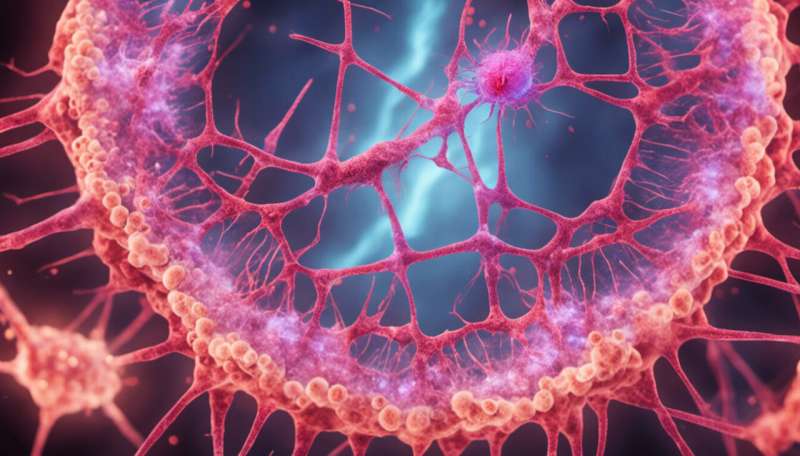Credit: AI-generated image (disclaimer)
Follicular lymphoma is often caused by a translocation between chromosomes 14 and 18, resulting in the overexpression of a cancer-causing gene called BCL-2. A research team co-led by A*STAR scientists recently revealed another role played by genetics in this slow-growing type of blood cancer. They found that a single amino acid variation encoded by an immunity-related gene called HLA-DRB1 helps to explain why some people are at elevated risk of contracting the disease.
Since 2009, several independent research groups have shown that variants in a genomic region on the short arm of chromosome 6 explain part of the heritable risk associated with follicular lymphoma (see image). This region contains genes that form the human leukocyte antigen (HLA) system, an important mediator of immune function. However, scientists did not know the exact gene sequences responsible for the lymphoma risk.
To find these variants, human geneticist Jianjun Liu and his team at the A*STAR Genome Institute of Singapore teamed up with researchers in the US and Europe. They analyzed sequences of HLA genes from 689 people with follicular lymphoma and 2,446 healthy controls from three independent population cohorts. Of all the variants tested, the strongest signal of disease linkage came from HLA-DRB1, a gene that encodes a subunit of the HLA-DR protein involved in controlling the body's T-cell responses.
In the HLA-DRB1 sequence, Liu and his co-workers identified a genetic variant at the site encoding the 13th amino acid of the resulting protein. Six amino acids naturally occur at this position. Of these, two were associated with a high risk of contracting follicular lymphoma, two were classified as low risk and two fell in between. In a comparison of disease burden, the researchers showed that people carrying two high-risk variants were 4.2 times more likely to develop follicular lymphoma than those with two variants encoding low-risk amino acids.
This information may be used to stratify individuals with higher and lower risk of developing follicular lymphoma. Most of the data, however, came from studies of European people. Thus, further work is needed to test whether it can also be used in people from Asia, notes Liu, who is now analyzing patient samples from Singapore and China. "Moreover," he says, "since this variant explains only a fraction of the risk, further studies are needed to identify additional variants and epidemiological risk factors that may be used in combination with this genetic information to provide more informative clinical risk prediction."
More information: Foo, J. et al. Coding variants at hexa-allelic amino acid 13 of HLA-DRB1 explain independent SNP associations with follicular lymphoma risk, The American Journal of Human Genetics 93, 167–172 (2013). dx.doi.org/10.1016/j.ajhg.2013.05.020
Journal information: American Journal of Human Genetics



















